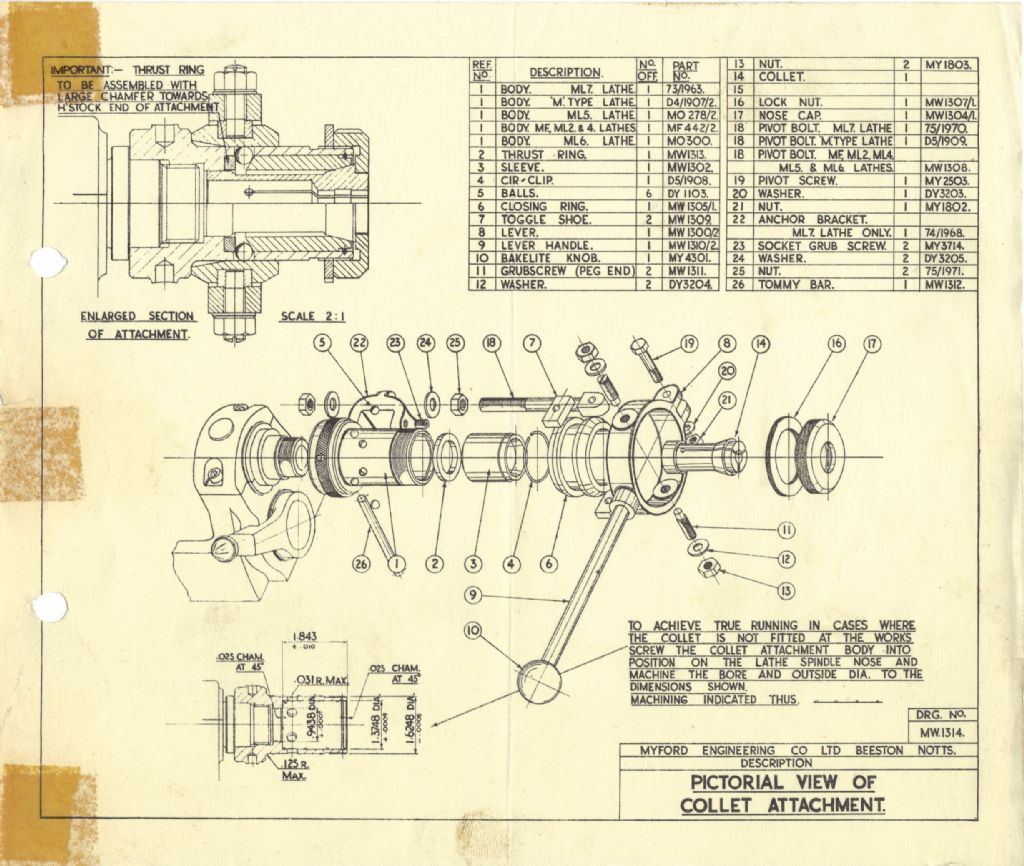Posted by Andrew Johnston on 31/10/2022 21:23:07:
The 163E series collets are dead length collets so intended for operation where speed of operation is paramount. As old mart says it should be lever one way clamps the work in the collet, lever the other way releases the work from the collet. During operation the collet should not move axially. It should be possible to clamp work, machine, release work and insert next workpiece without stopping the spindle.
If the above isn't true then either something is missing, is misadjusted or is damaged.
Thank you to everybody for your contributions – it has been a busy week and I did not expect so many after the lack of interest in my original posting.
I am not sure how much use photographs would be because they do not show the innards. However, if push comes to shove, I could disassemble again.
Instead of photos, here is a diagram, which is certainly not to scale, but I think does show the operation of the chuck.

The dark green is the spindle and the light green is the fixed portion of the chuck. The collet (grey) is held in position by the closer (yellow) and if it is not moved, then clearly the collet remains in the same position. Operation of the lever (black) moves the blue sleeve to the right and the taper pushes the balls (6) inwards. This in turn moves the red sleeve to the right. 1 inch of movement in the blue sleeve results in about 50 thou of movement in the red sleeve, and perhaps 10 thou radially of the collet. So as the red sleeve is moved rightwards, the collet grips the workpiece.
When the lever is moved to the left, the pressure on the balls is removed and the red sleeve is free to move to the left and release the workpiece. However, it seems fairly obvious, due to the taper, that springiness of the collet will not exert much force on the sleeve. Moreover, the red sleeve is a push fit in the light green one so there would have to be some positive force to move it to the left.
I cannot see how the chuck could have been assembled wrongly and I do not see how anything could have gone missing. Whilst there are witness marks to show the force of the balls to the right, there are none to the left.
Further contributions will be much appreciated.
Edited By Chris Pearson 1 on 05/11/2022 19:05:39
Edited By Chris Pearson 1 on 05/11/2022 19:07:09
noel shelley.






